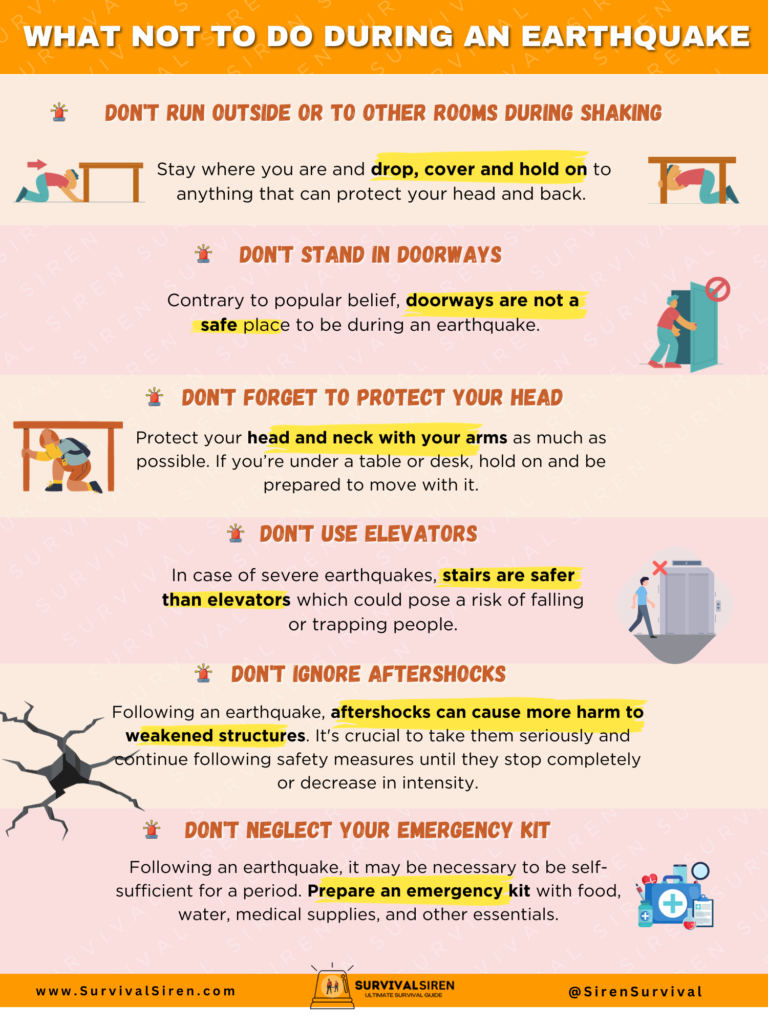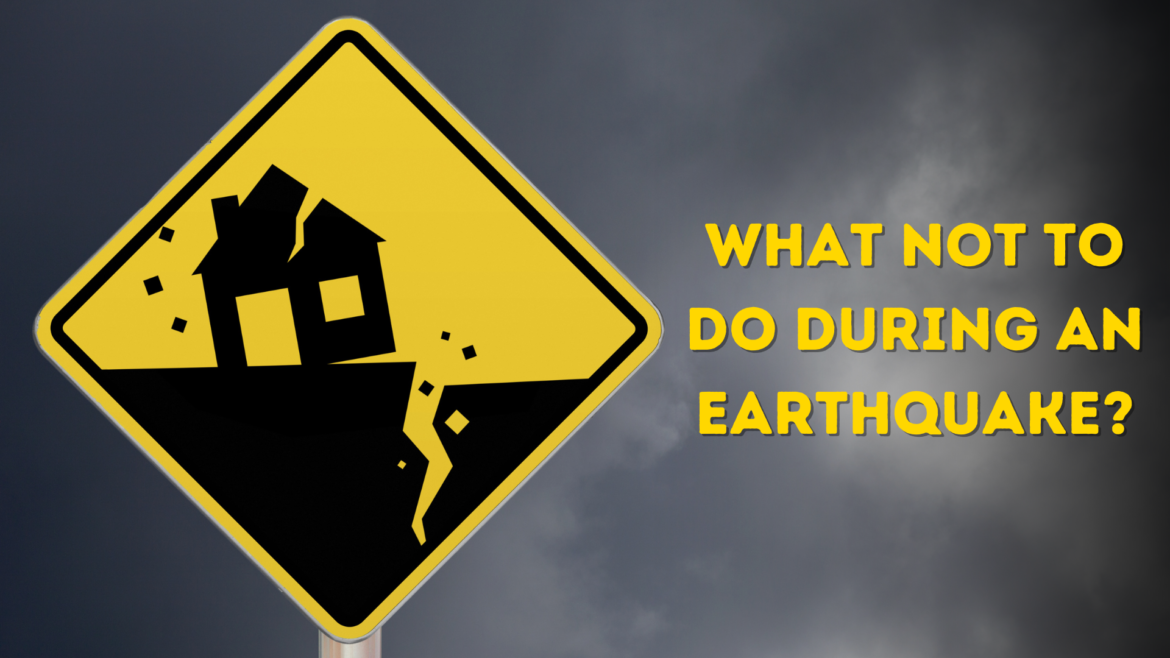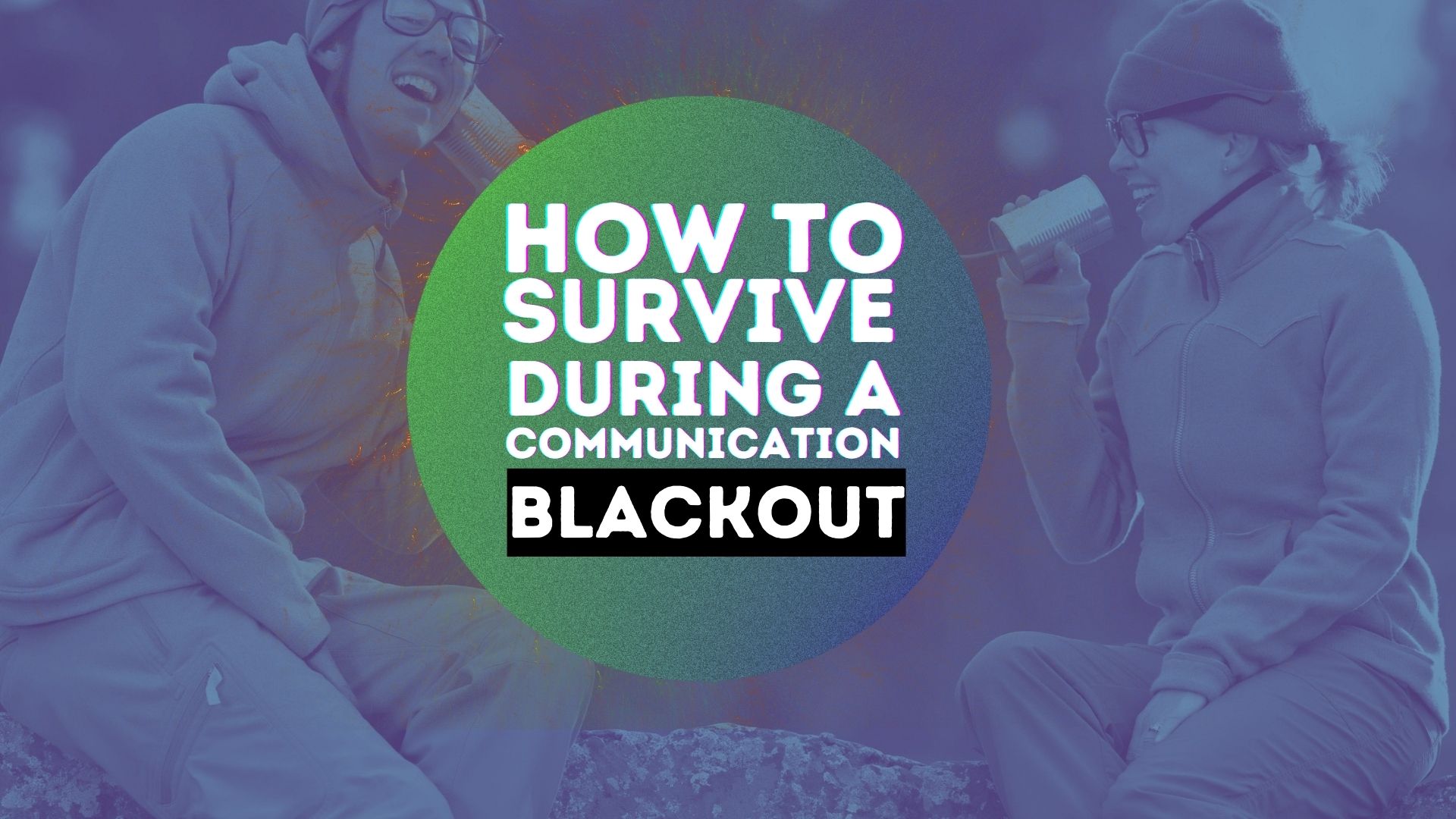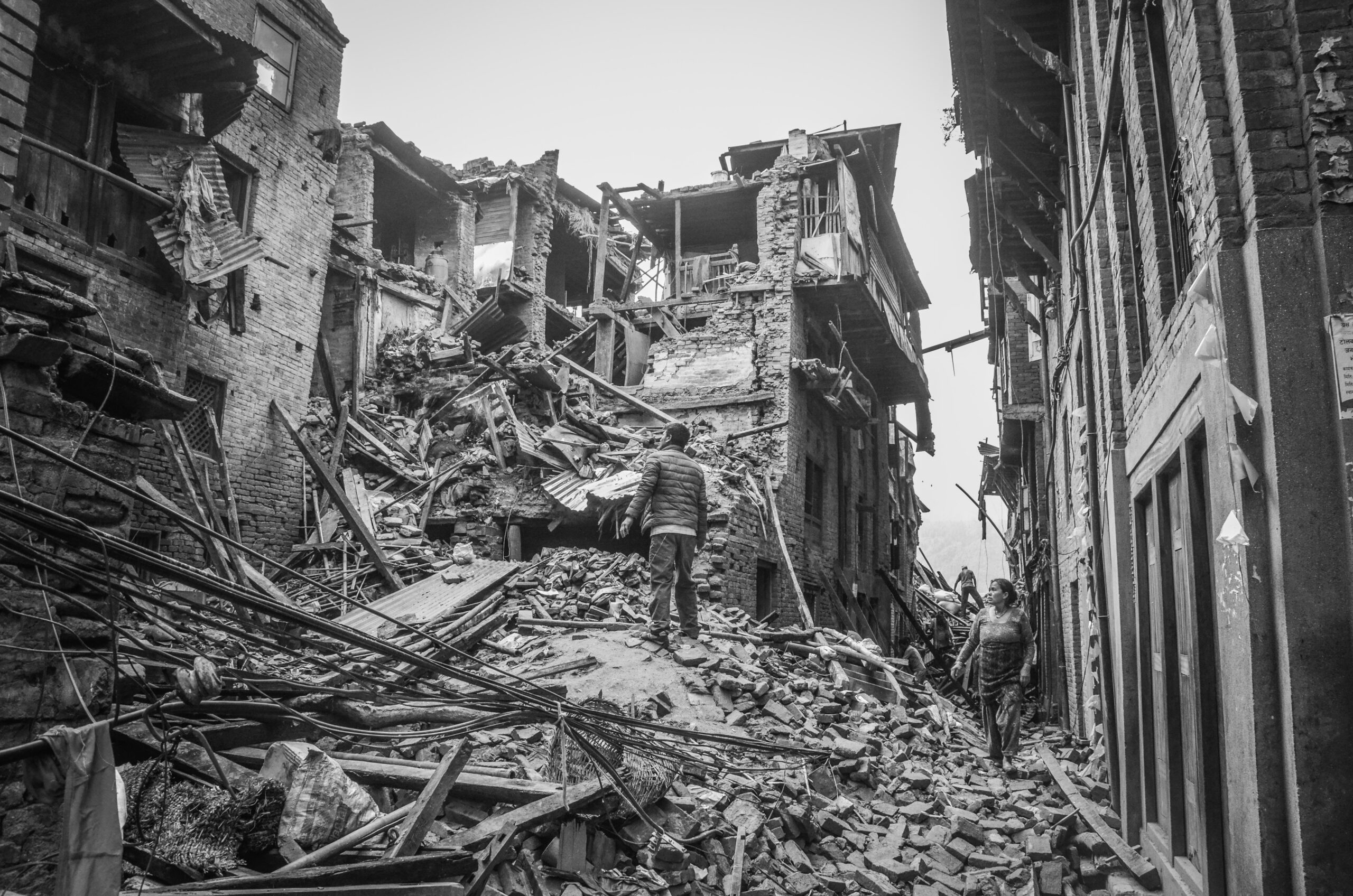Earthquakes are unpredictable and can be incredibly destructive. Moreover, as our sun moves into its solar maximum phase, the earthquake frequency is going to increase over the next few years. So, while it’s crucial to know what actions to take during an earthquake, it’s equally important to understand what not to do during an earthquake.
A lot of people make some fairly common mistakes during earthquakes and end up getting injured if not worse.
Here are some common mistakes people make during earthquakes and how you can avoid them.
1. Don’t Run Outside or to Other Rooms During Shaking
One of the most dangerous things to do during an earthquake is to try to leave the building. The exterior of buildings is one of the most dangerous places to be as windows, facades, and architectural details are often the first parts of the building to collapse.
Instead, ‘Drop, Cover, and Hold On.’ Drop to your hands and knees, cover your head and neck, and if possible, take cover under a sturdy piece of furniture until the shaking stops.
This video from an school in Anchorage Alaska is a classic example of how to react during an earthquake if you are inside any building.
2. Don’t Stand in Doorways
Contrary to popular belief, doorways are not the safest place to be during an earthquake. Most doorways these days are made of aluminum or wood which means that in modern buildings, doorways are no stronger than any other part of the structure and provide no protection from falling or flying objects. You’re safer under a table.
3. Don’t Forget to Protect Your Head
Many injuries in earthquakes are caused by falling objects. Protect your head and neck with your arms as much as possible. If you’re under a table or desk, hold on and be prepared to move with it.
4. Don’t Use Elevators
Elevators are a risky place to be during an earthquake. If the power goes out, you could be trapped, and if the earthquake is severe, the elevator could fall. Always use stairs if you have to make a run. However it would be best to stay under cover during an earthquake. Using stairs during an earthquake is not the wisest of moves because firstly you can easily trip and fall and secondly if you are in a big building, there is a chance of stampede as others rush to use the stairs in panic as well.
5. Don’t Ignore Aftershocks
Aftershocks always follow the main shock of an earthquake. These can be strong enough to cause further damage to already weakened structures. Treat them seriously and continue to follow safe practices till the after shocks lessen in their intensity or stop altogether.
It is best to stay updated about possible aftershocks through your local tv or radio news. You can also follow X (formerly twitter) accounts that regularly give earthquake forecasts.
6. Don’t Neglect Your Emergency Kit
After an earthquake, you may need to be self-sufficient for a while. If you haven’t already, put together an emergency kit with food, water, medical supplies, and other essentials.
It is absolutely vital to have an emergency kit read at all times because emergency can strike any time.
Conclusion
Earthquakes can be frightening, but being aware of these common mistakes can help keep you safe. Remember, the key is to remain calm, protect yourself from falling debris, and wait for the shaking to stop before moving. Share this information with your friends and family – it might save a life.
You can use our downloadable infographic and print it out as a poster or leaflet to make sure that everyone around you is aware of what not to do during an earthquake.
